![]()
Jade. Greenstone… Or Pounamu in Maori. Used since the early age by New Zealand tribes, this stone holds a great status in Maori’s culture. Spiritual stone, social status indicator, trading material, weapon or tool… the pounamou is ubiquitous, and also deeply enrooted in the tradition of the country of the long white cloud.
Grown in deep the heart of mother Earth, the pounamu is bring up to the surface by tectonic movements. In New-Zealand, you can find it principally in the beds of South Island rivers. Its mineral composition makes it lighter in the water than most of the other stones, that is why it is often found on the banks of the river, rejected by the current.
Principally green, it can also be either black or blue or even white. Jade is hard to find, and gets really heavy when it gets out of the water. Seeking jade, knowing exactly what to look for when walking along a stream, is not something you can improvise. It needs time and experience. In Hokitika, New Zealand jade capital, we get the chance to meet the mastercarver Steve Gwaliasi from Bonz’n’Stonz who shared a bit of his knowledge with us…
The jade and the Maoris
When Maoris discovered the amazing pounamu in their rivers, they instantly considered it as a Taonga (treasure). They started to collect the stones and to create weapons, tools and jewels out of them. At this time, they used only rudimentary carving tools made from sandstone or graywacke. They also traded pounamu with the tribes of North Island, Samoa, Vanuatu or Fiji…
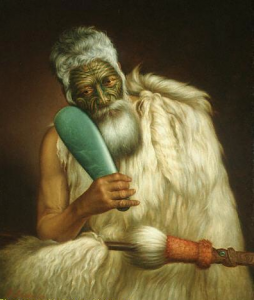 During this period, the south island tribes were living on the West Coast in summer and on the East Coast in winter. There were only two paths to cross the mountain range, following the rivers winding their way through the valley. The tribes were then able to easily carry their pounamu treasures, using their light properties in water. Over time, these paths developed and are now known as the Pounamu Trail.
During this period, the south island tribes were living on the West Coast in summer and on the East Coast in winter. There were only two paths to cross the mountain range, following the rivers winding their way through the valley. The tribes were then able to easily carry their pounamu treasures, using their light properties in water. Over time, these paths developed and are now known as the Pounamu Trail.
There is a deep spiritual bound between the Maori people and the pounamu. They believe that their ancestors’ spirits live in the stone. They also believe that a pounamu jewel or weapon holds a part of his owner’s spirit. This therefore increases the spiritual value of a stone, and offering to someone a pounamu holds great meanings. It is like giving away a part of yourself and such a present would be a proof of a very special and strong relationship between two beings.
Maoris also believe that the first pounamu that someone finds or buys can’t be kept and must be offered to someone else, otherwise very bad luck occurs. Because of its rarity, the pounamu was extremely precious and only the leaders or highly ranked people could own jade items.
But Maoris are warriors and soon they started to fight each other over pounamu taonga (treasures).
Nowadays, the principal river where Maoris find jade is the Arahura River, north of Hokitika. In this sacred river, only the maori families owning the land are allowed to seek the pounamu. However, you can get the chance to be invited by a Maori to go looking for jade with him.
Looking for jade alone and without invitation is considered an offense!
Some maori beliefs says that the carver is not the creator of the shape and sketches of the jewel, but that the stone itself guides the carver to reveal its real nature.
Another belief says that when jade is in the wild, it takes a grey color to hide among the other stones. But it also says that inside the jade is the true female beauty and all its secrets. When you carve it, you undress it and release its true green beauty.
Steve Gwaliasi & Bonz’n’Stonz
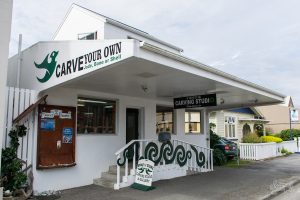 In 1990, the government started to develop the tourism industry and offered paid training in various fieldsto encourage locals to engage in tourism. Steve followed one of this courses for 10 weeks to become a jade carver. He worked for a big carving company in Hokitika for several years to improve his technique then, in the same time, he started to work for himself in his little workshop. His friends, then friends of his friends were ordering more and more jewellery, so he finally left the company to join the Hokitika Crafting Gallery composed of several artists. He became one of the 20th permanent members for 5 years.
In 1990, the government started to develop the tourism industry and offered paid training in various fieldsto encourage locals to engage in tourism. Steve followed one of this courses for 10 weeks to become a jade carver. He worked for a big carving company in Hokitika for several years to improve his technique then, in the same time, he started to work for himself in his little workshop. His friends, then friends of his friends were ordering more and more jewellery, so he finally left the company to join the Hokitika Crafting Gallery composed of several artists. He became one of the 20th permanent members for 5 years.
A few years later, when backpackers and travellers from all over the world started to come massively in New Zealand, he asked a 100 tourists if they would be interested in carving their own jade : 60% answered they would love to give it a try! So 10 years after his first training, he opened his fist carve-your-own workshop in Hokitika. At this time he didn’t have any boutique. In 2005, he opened his current boutique with a bigger workplace, where he can now expose his work and that of local artists.
Today, Bonz’n’Stonz is THE place in new zealand to try and carve your own.
The jade industry is thriving, thousands of tourists from all over the world are willing to buy jade jewellery. Local resources need to be protected, which leads to a new problematic for the maoris and the actors of the jade industry: how to save new Zealand jade from overexploitation while using enough to provide the tourism industry?
The jade from the river to the jewel

 The Bonz’n’Stonz Studio offers to anyone to come to the workshop and carve his own, under Steve assistance.
The Bonz’n’Stonz Studio offers to anyone to come to the workshop and carve his own, under Steve assistance.
How is it exactly? How is the stone, coming directly from the river, turned into a beautiful jewel.
We get the chance to experience jade carving and to discover the whole process!
Here are the different steps:
1- The design and stone choice.
Choose a design, then cut out a pattern to draw it on your chosen stone. The price of the stone will vary, depending on its quality. There is a lot of different varieties of pounamu. The most rare and expensive is the perfectly flawless green translucent one. Be careful however, not all of the pounamu is jade, but all offer interesting aesthetic qualities.
2- Cutting and shaping
We use diamond disks or drills, then a grinder to cut than roughly shape the jewel. You need to use running water when working on jade, otherwise the heat produced by the tools might damage the stone.
3- Carving the design
The funniest part! Using diamond burs, we carve the pattern that we drew on the stone. The more complex the pattern is, the longest it’s going to take to do your carving. You will need precision and patience!
4- Polishing and buffing
We use diamond paper to smooth out the rough aspect of the stone, and then a polishing wheel with polishing compound on it to give the jewel it’s final shine!
5- Finishes :
Once the jade is buffed, we brush it lightly with oil then, if it’s a pendant, attach it to a plaited string.
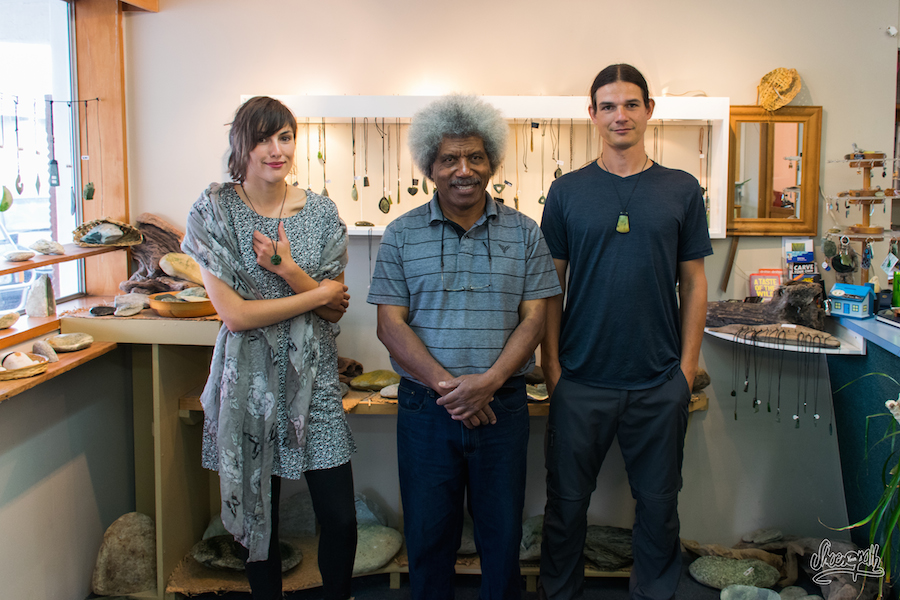
Informations :
Carve your own jade :
- Bonz’n’Stonz studio in Hokitika
- Time required to carve your own piece :
Jade : 5 – 6 hours
Bone or Shell : 3 – 4 hours - Price:
Jade : From NZ $180
Bone : From NZ $95
Shell : From NZ $85
Actual price will depend on the design and choice of material. This can be checked with Steve before carving starts. - Hours of business:
Summer: Nov 1st – March 31st : 8 am – 5 pm Monday to Saturday
Winter: April – October : 9 am – 5 pm Monday to Saturday - It is advised to book in advance to ensure that you do not miss out!
- Bonz ‘n Stonz
16 Hamilton St.okitika
Hokitika - Studio/Gallery Phone: 03 755 6504
Freephone: 0800 214 949
Email: bonznstonz@clear.net.nz
www.bonz-n-stonz.com

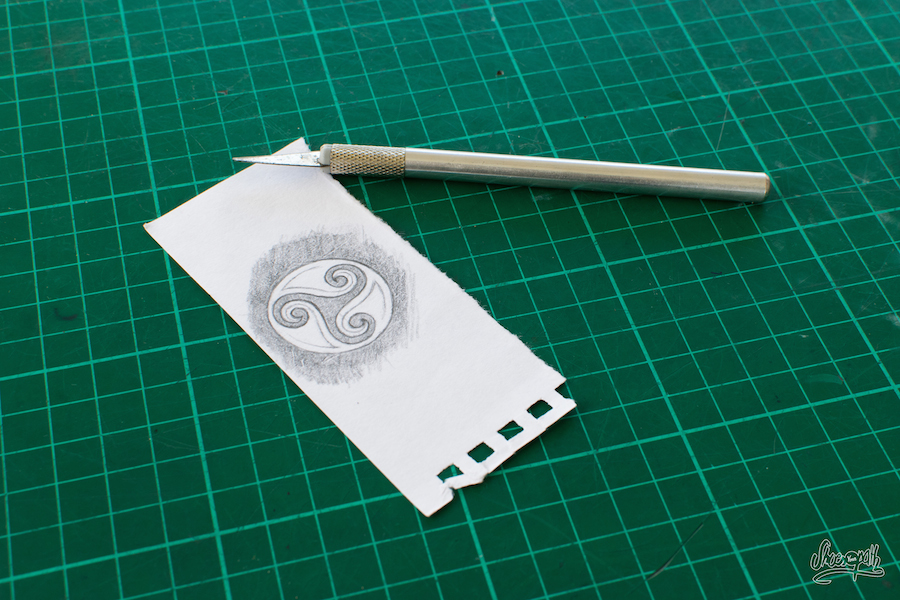
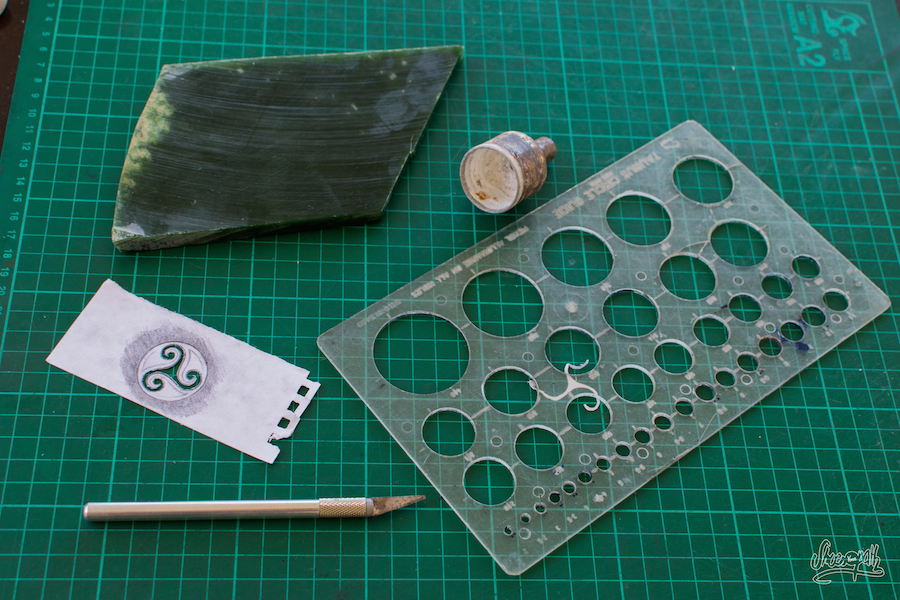

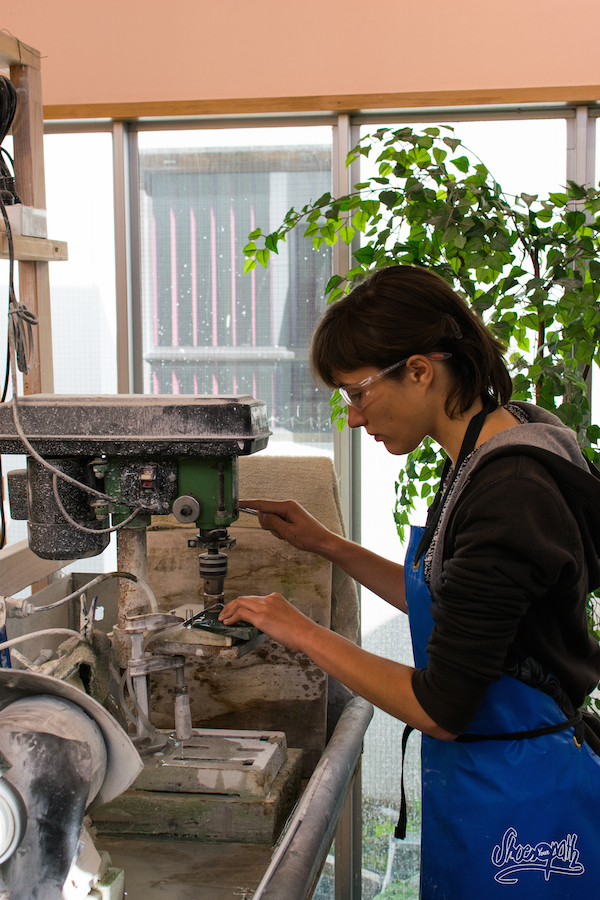
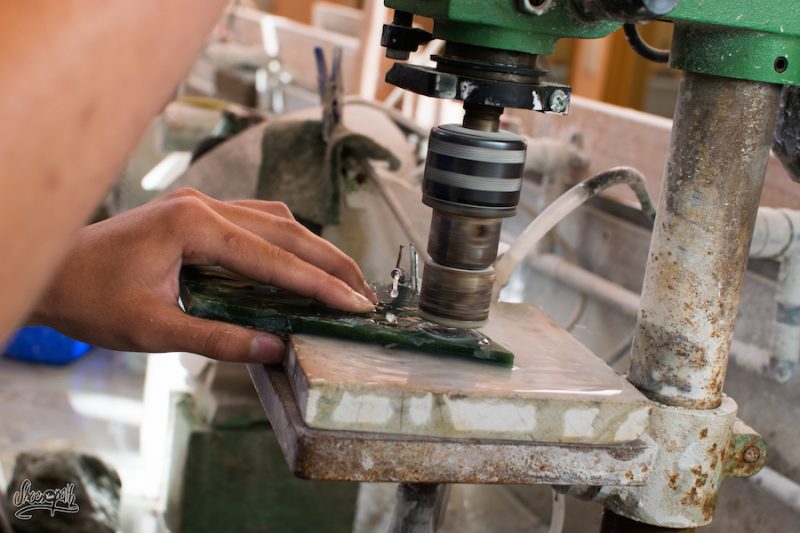
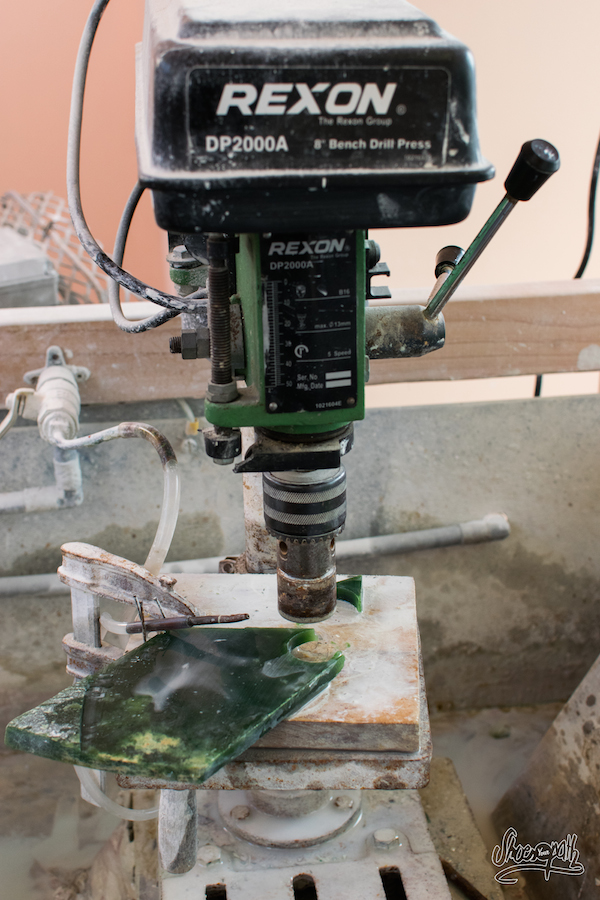
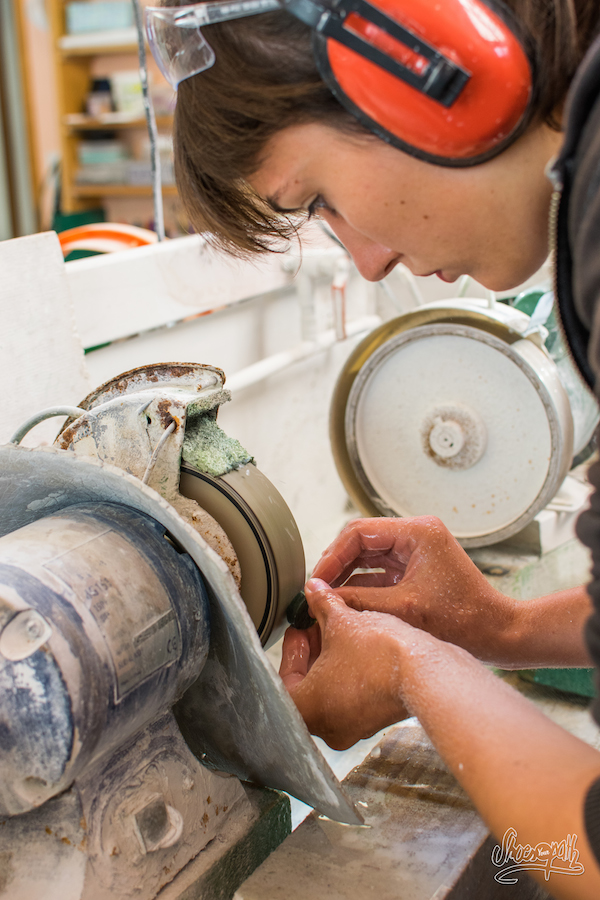
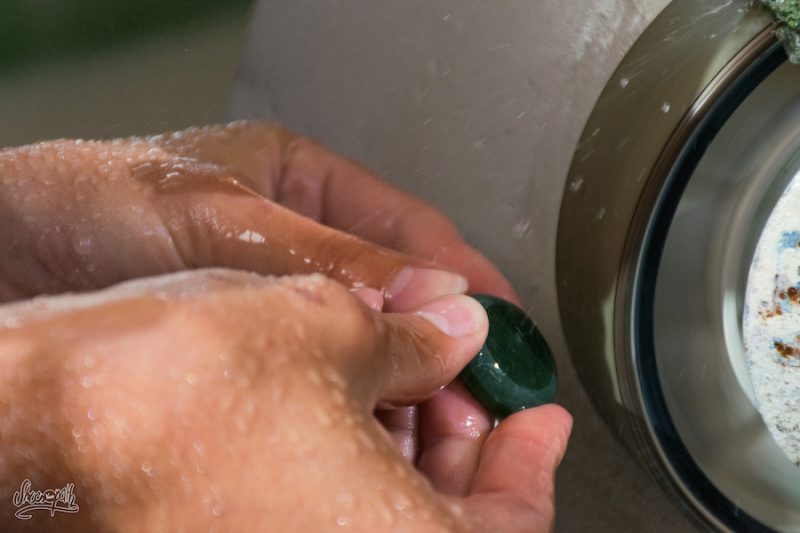
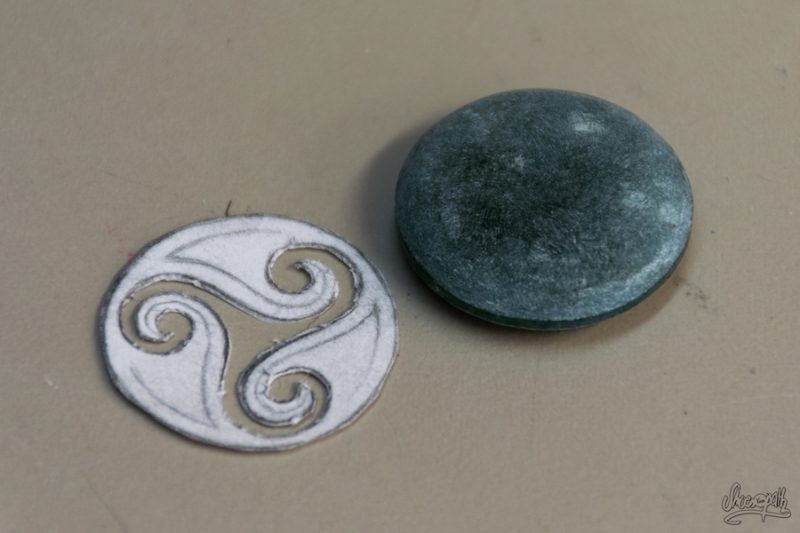
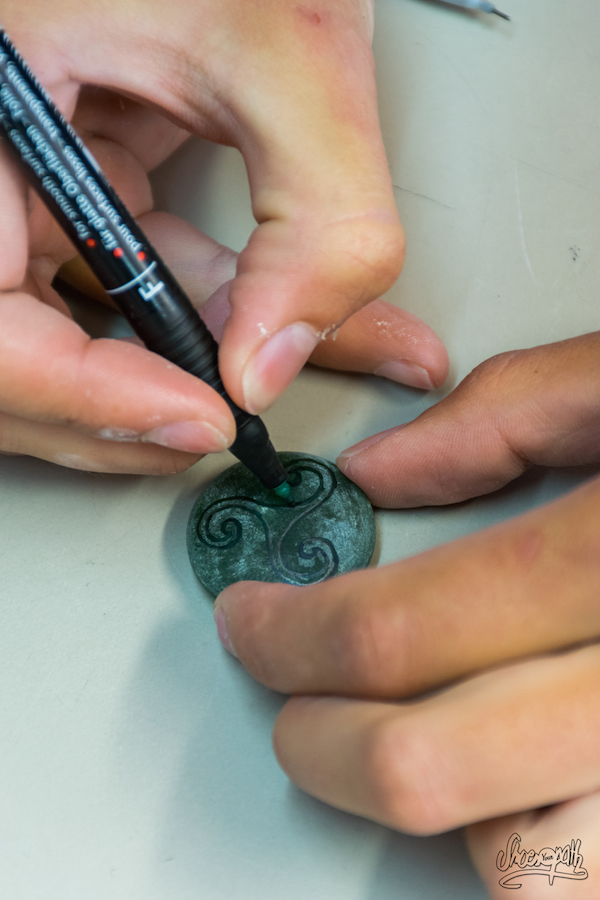
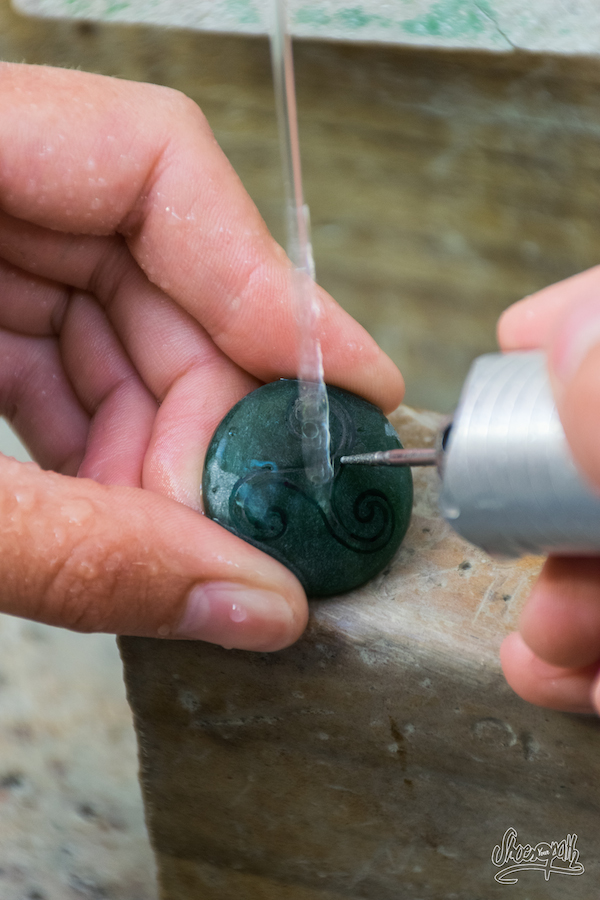
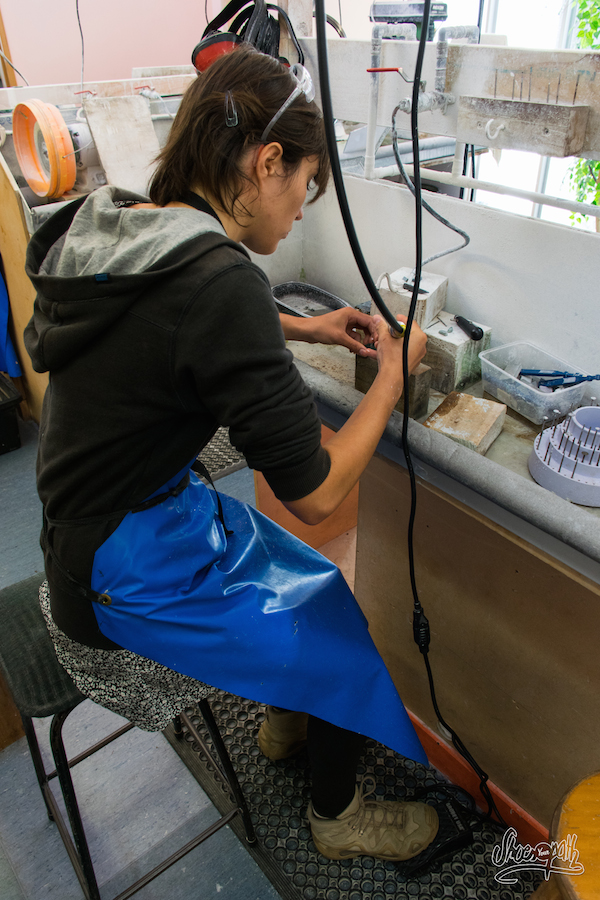
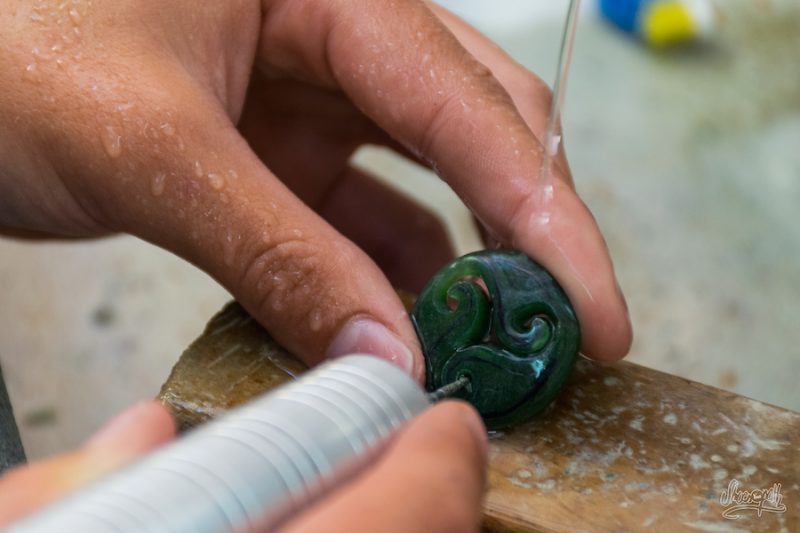
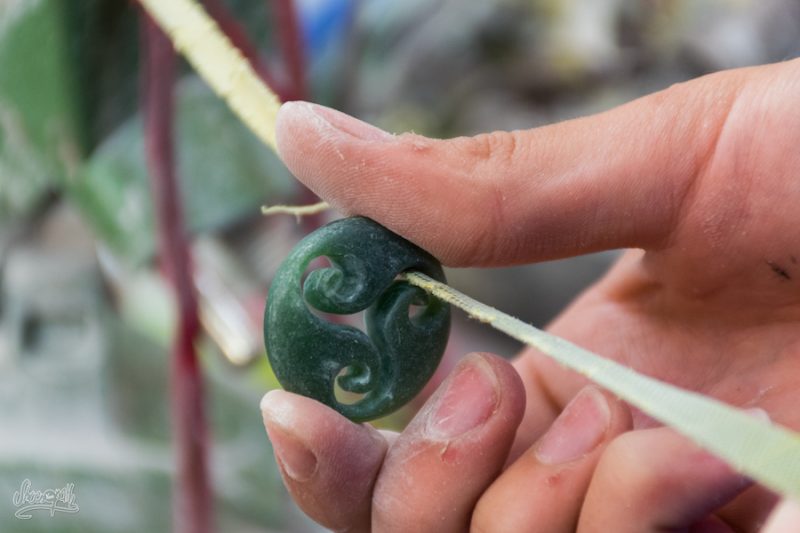
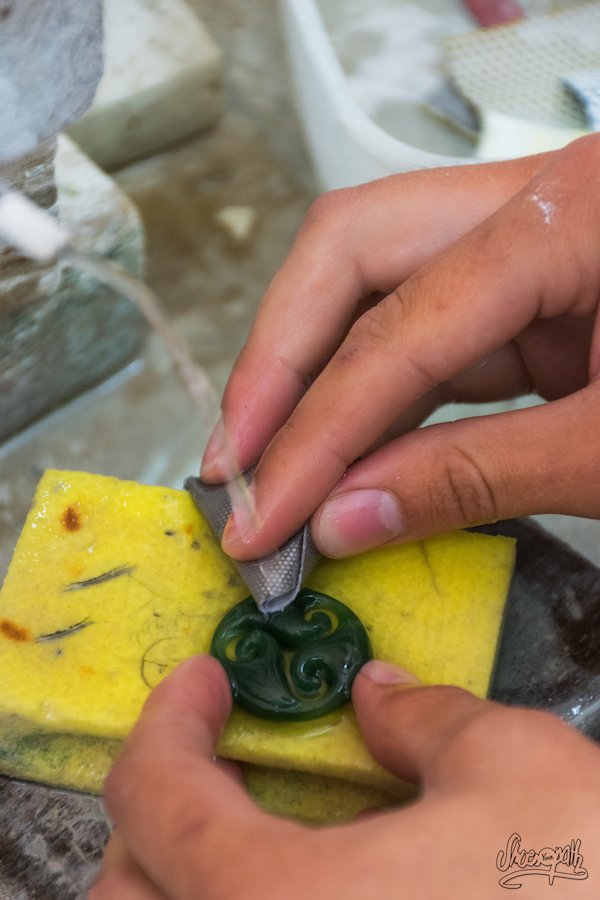
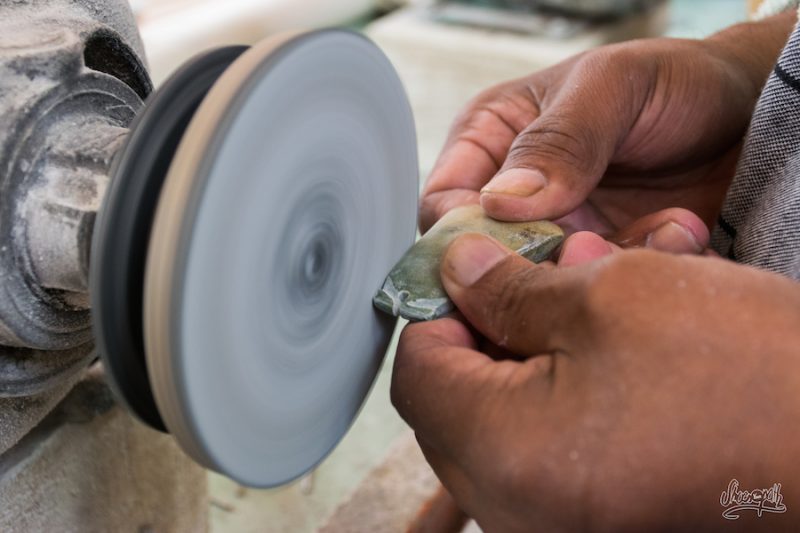
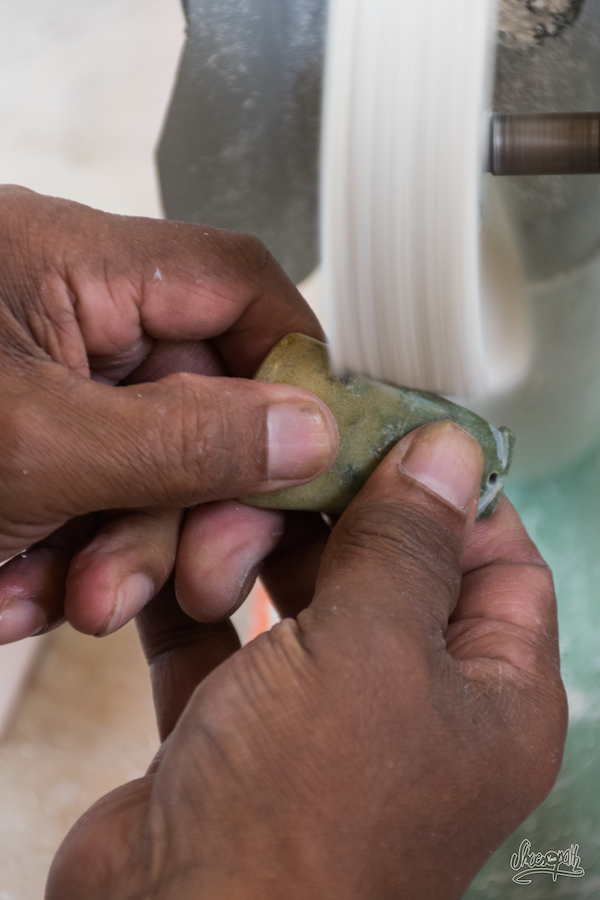
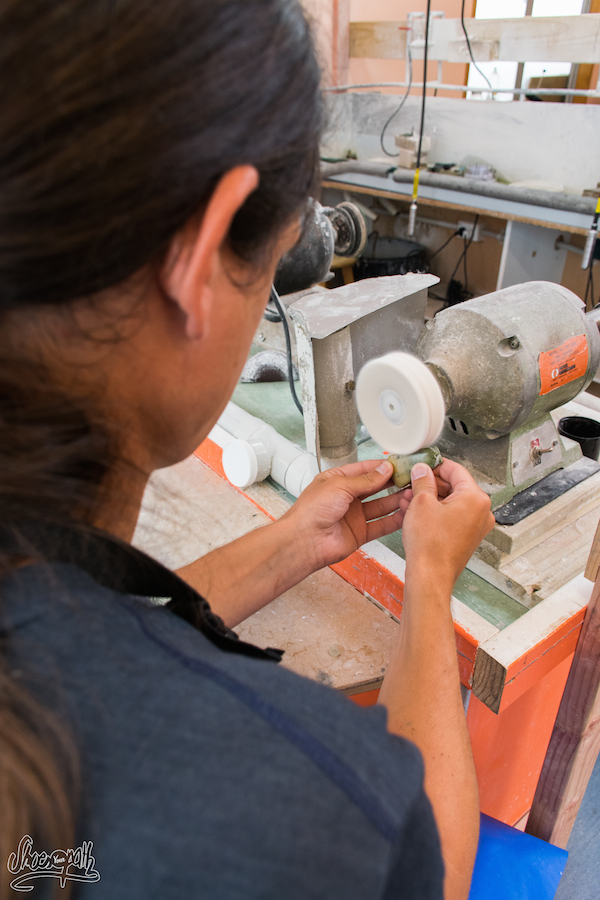
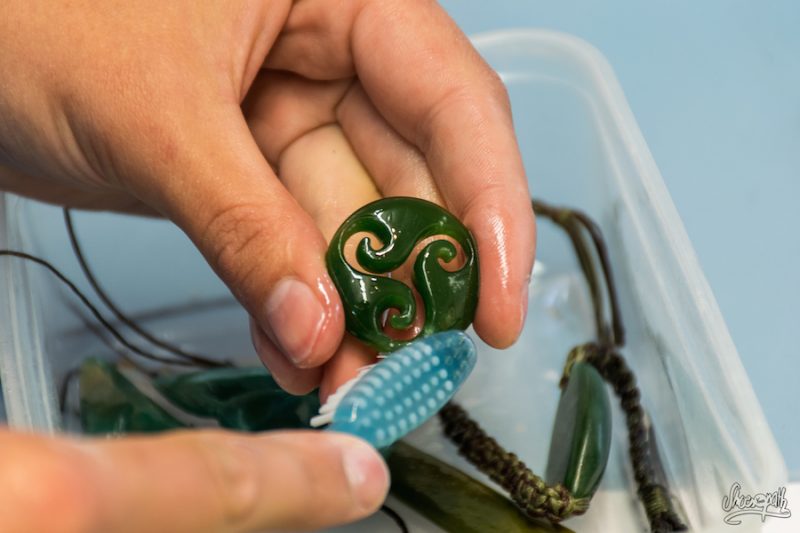
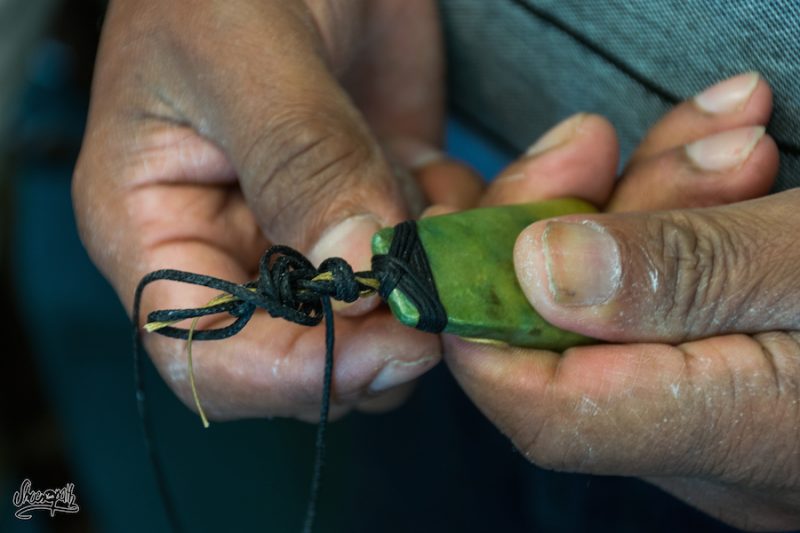
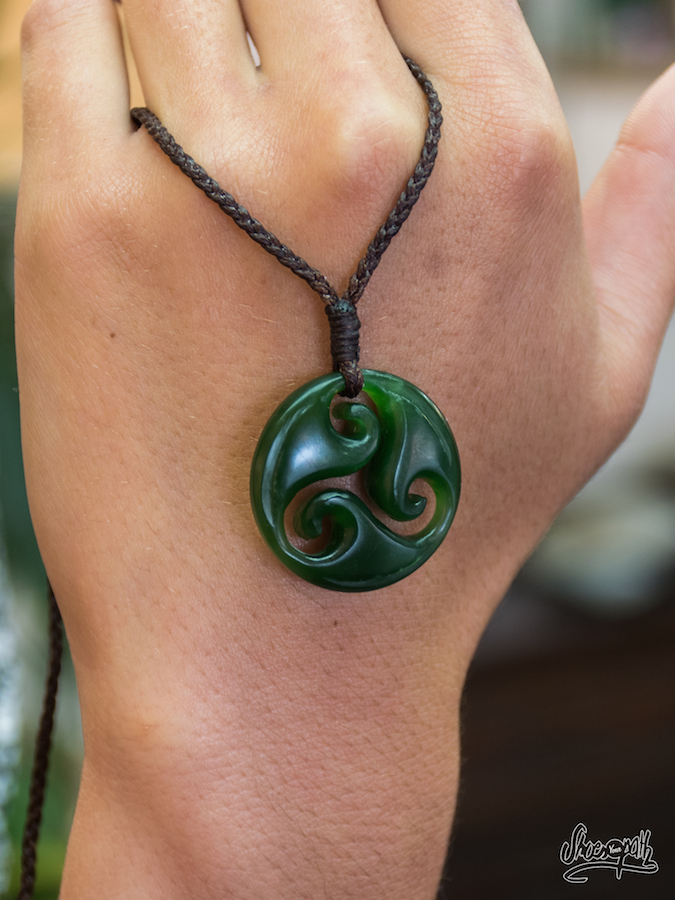
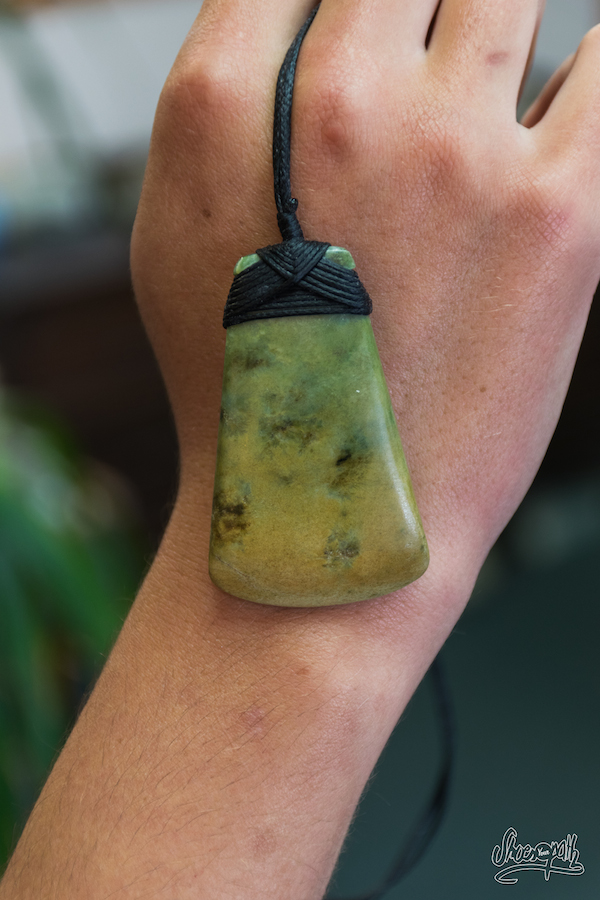
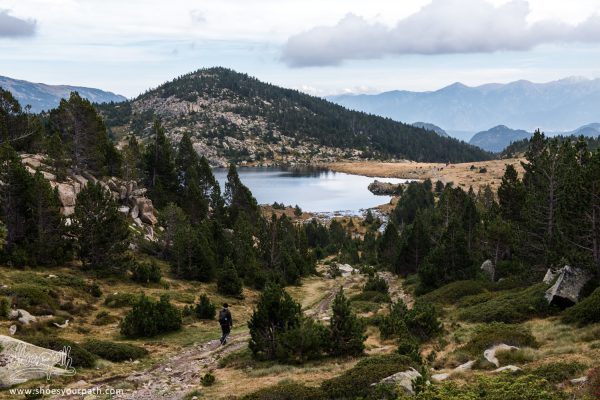
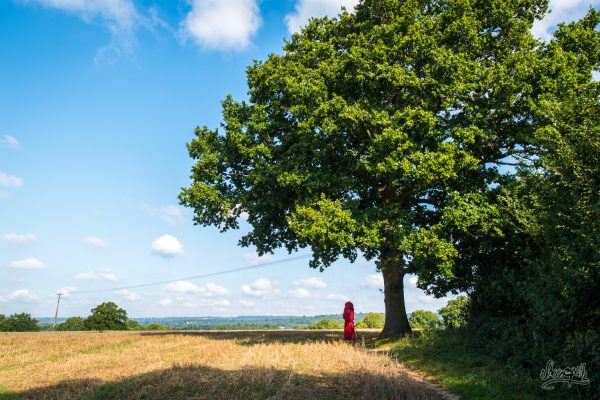
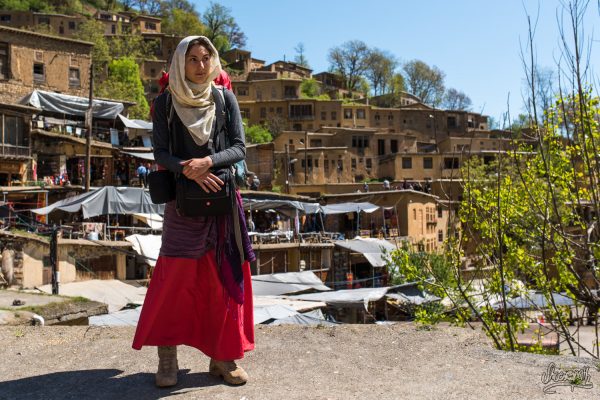
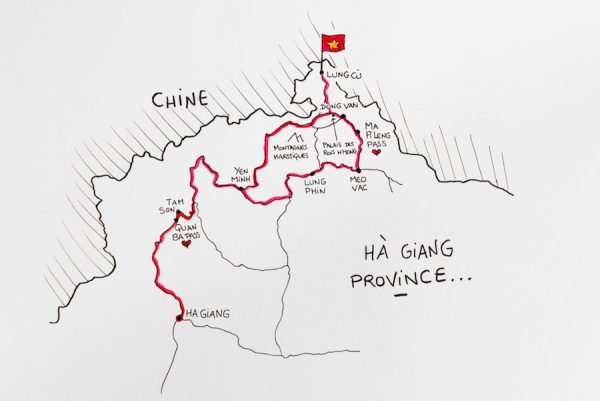
Cet article comporte 0 commentaires